2016-06-26
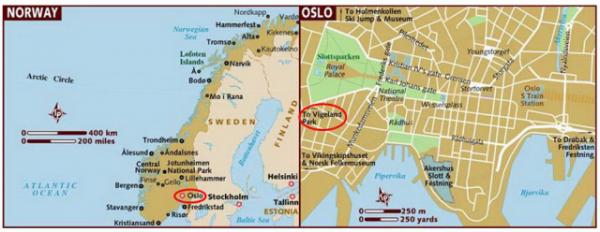
【Aiden in English】
In science class, we learn that life is a cycle. Back to the basics, all organic items are recycled into the earth through decomposition, heat, and pressure, which break our bodies down to dust and nothingness. I understand it is life. For kids with Thanatophobia, however, it benefits no one. Imagine a father thing to calm a crying child, saying, "It's okay, son, 'cause when you die, the ants gonna crawl all o'er you and they gonna eat you! Then you gonna go into the ground, curl up, and never see the sun again!" Yeah, it's not the best idea, yet it is life, and we, as mature people, put this into random places. We study, worship, and, oddly, sculpt statues of this idea. Oslo contains many odd artists. One made an iceberg out on the shallow harbor waters, calling it a monument of floating glass and steel icebergs. The main feature is the Vigeland Sculpture Park, located within the naturalistic Frogner Park, featuring unique statues. The sculptor Gustav Vigeland (1869-1943) was fascinated with how dead people are absorbed back into the environment and "reborn," figuratively speaking. Although it sounds much like a religion, Vigeland was religious, and the sculptures didn't depict a particular religion. Some may say they represent reincarnation, which hints at the influence of Hinduism and Buddhism. However, Vigeland never revealed his religion to the public, as the only information he provided was that it meant a great deal to him personally. So, we have a faith that deeply expresses death, which is an excellent lead to nowhere. The statues featured five figures, all of which were naked. They included babies, teens, middle-aged individuals, the elderly, and skeletons, all of which had two genders. The sculptor had explicitly designed them to be naked, symbolizing the universal meaning of his art. In the park, three main attractions were hosted in the center: a pedestal, a fountain, and a bridge. Each one contained the same idea of recycling our bodies. The first showed a ring of people from life to death. The child is born, and he sees his parents die. The statues express the genuine emotions of the people in the scene, as each one changes the theme of the overall picture. In the end, the child grows old and, unsurprisingly, dies. In the center of the Ring rose a tall pillar, the Monolith, that sat above the entire park. It measured 14 meters/46 feet in height. At the bottom was a group of ... dead people. At least, that's what I would assume since their arms were bent, and their backs were probably broken. In the middle, a struggling section of people climbing to the top, where they were transformed into children and babies and flew wherever Vigeland wanted them to go. That destination is a mystery to this day, and so is the pillar's meaning. Many theorists have ideas, but nothing has been proven. Another interesting idea in my mind was the dragons. Four statues marked four entrances to the park, each depicting a figure standing with a dragon touching their body. Two stood near the front gate, where one Woman was standing with a dragon creeping up her back while the other was with the dragon in front of her, as she hated it. The guide explained that the dragon represented evil in whatever suture this was, as we Chinese are extremely infuriated, but it is what it was. The dragon creeping up the Woman's shoulder symbolizes the acceptance of evil, and the other statue symbolizes the fight against the dark side. The Vigeland Sculpture Park contains all the main aspects of a world religion. It is about an idea of what happens after death, a cycle of life, and an idea expressed to people, guiding them and instructing them on what to do and what not to do. It is a way of living, and although Vigeland lived in the 19th and 20th centuries, he expressed many ideas that remain relevant today. 【红霞译】
科学课上我们学过生命循环,按照基本常识一切有机物质必将回归自然,分解、加热乃至高压都能让人体化为灰烬,我明白死亡实为生命的延续。对于胆小怕死的幼童来说,解释过多反倒于事无补,试想当爹的为了安抚吓哭的孩子说:“儿子想开点,等你百年之后,蚂蚁肯定跑来陪你,直到天荒地老!到那时你将化作一抔黄土,无声无息地蜷伏地下,再也无法重见天日!”唉,用这种方法教育孩子虽然并不可取,但是自然规律实际就是如此,随着年龄日趋长大思想逐渐成熟,朋友之间经常把“死”字当成调侃生活的素材,有人研究死亡,另有人敬畏死亡,更为离谱地还有人美化死亡,用雕刻艺术尽情渲染生命终结。
奥斯陆人才辈出,艺术家们在水位低浅的前海沿唾手雕琢起一座冰山──浮动的玻璃钢冰山,当然最具代表性的艺术作品应首推位于弗罗格纳“沃土肥田”自然公园内的巨石雕塑群。就其造型构思而言,雕塑家古斯塔夫·维格兰“神杖·维京人土地”(1869-1943)幻想死人如何被环境吐故纳新,又怎样“脱胎换骨”转世重生,尽管听起来带有宗教色彩,雕塑家本身确实信教,但其作品并非局限在宗教范畴。或许有人会说巨石雕塑表现生死轮回,隐含印度教及佛教思想,然而雕塑家从未公开过个人信仰,仅仅表示创作过程有助于加深宗教意识,照此说来人们信仰的就是宣扬死亡救赎的宗教,其终极目标难以实现。巨石公园的雕像归为五类,它们浑身一丝不挂,人物对象包括儿童、青少年、成年、老年以及骷髅,并且男女参半;雕塑家之所以精心设计赤身裸体,无非在于体现大自然中形体与线条的艺术之真;整个公园主要把雕塑群分成三个景区:圆台阶、喷泉和石桥,每一景区都遵循周而复始的主题思想。第一个景区展示圈成圆圈的人们生死过程:婴儿诞辰之后目睹父母辞世,随着情节发展,每幅作品都表现出真实情感;最终孩子长大变老,无一例外地踏上通往坟墓的道路;圆台阶中央矗立着一个生命之柱,大约高达14米/46英尺,是公园制高点。生命之柱的底层由死人组成,至少我这么推测,因为他们手臂弯曲,后背脊梁骨折;在中间一层,民众苦苦挣扎,个个竭尽全力朝上爬,他们中不乏幼童婴儿,全部摆开姿态奔向……雕塑家指定的地方,截至到目前为止,前方目的地不祥,这正是生命之柱的奥秘所在,为此招来不少理论家苦思冥想,但推敲结果一直无法得到证实。
在我看来另外一个极为有趣的构思就是大龙,公园四个入口处各有一幅雕像,每幅雕像都描述有关大龙抚摸人体的情景。前门有两条大龙:一条从背后伸出诡秘的双臂拥抱女人;另一条则从正面拥抱女人,好像招致女人不满。导游解释道,在这里大龙代表邪恶,当心别激起我们中国人民愤,估计雕塑家对之缺乏了解。言归正传,前一个表示女人与恶魔同流合污;后一个则象征正义力量与黑暗势力进行殊死搏斗。 巨石雕塑公园集世界宗教思想之大成,将人死后所发生的事情、转世轮回以及人生在世该做的不该做的等全部用雕塑手法表达出来,无愧于为人处世的行动准则,尽管雕塑家生活在19─20世纪,但他的许多思想仍然值得现代人学习。
Today in History(历史上的今天): 2016: Oslo, the City of Tiger in Norway(挪威奥斯陆·老虎之城) 2015: Istanbul, the Gate of Felicity TUR(土耳其伊斯坦布尔·东西合璧) 2015: Istanbul w/ Grand Bazaar, Turkey(土耳其伊斯坦布尔·大巴扎集市) 2015: Istanbul w/ Hagia Sophia, Turkey(土耳其伊斯坦布尔·圣索菲亚大教堂) 2014: Chili's(红辣椒烧烤酒吧)  Monument of Floating Glass & Steel Iceberg Monument of Floating Glass & Steel Iceberg
(浮动玻璃钢冰山纪念碑) 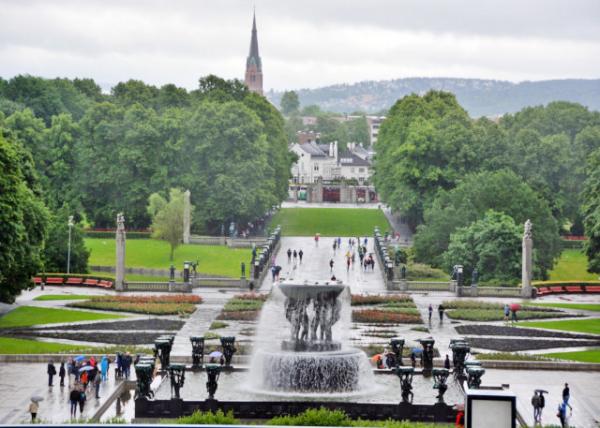 Frogner Park (弗罗格纳公园) Frogner Park (弗罗格纳公园)
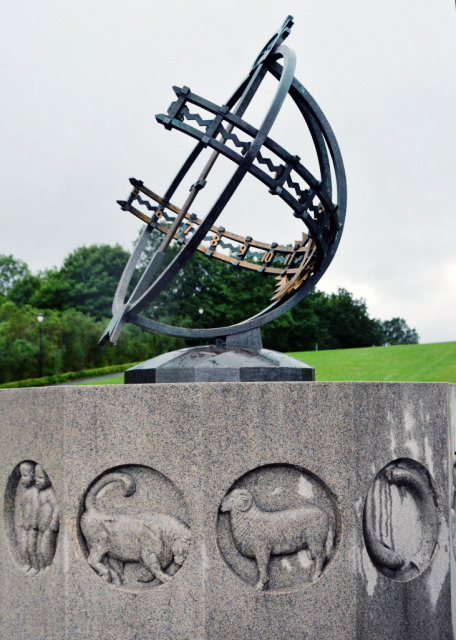
Sundial (日晷) 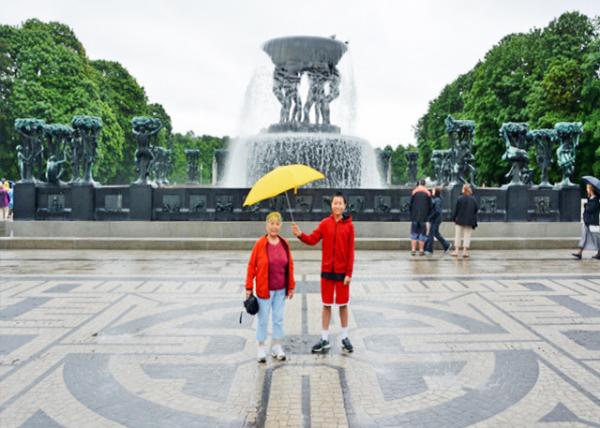 Vigeland Sculptures Vigeland Sculptures
(维格兰雕塑作品 06-26-2016) 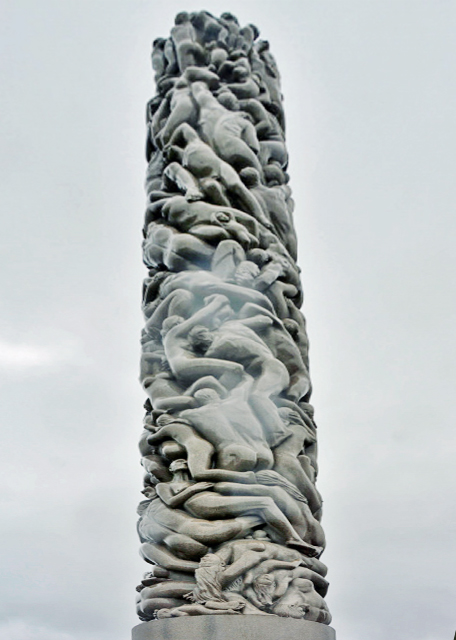
The Monolith (巨石) 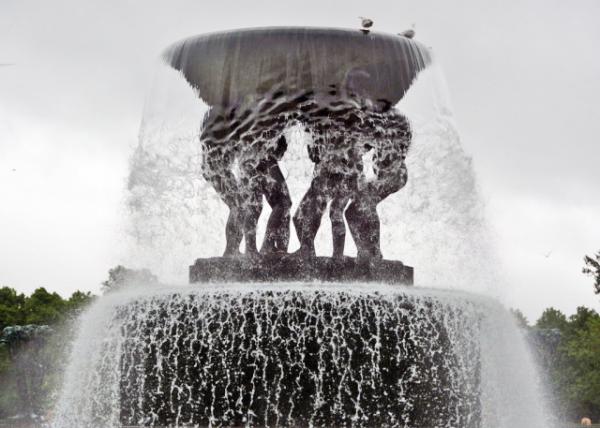 The Great Fountain (大喷泉) The Great Fountain (大喷泉)
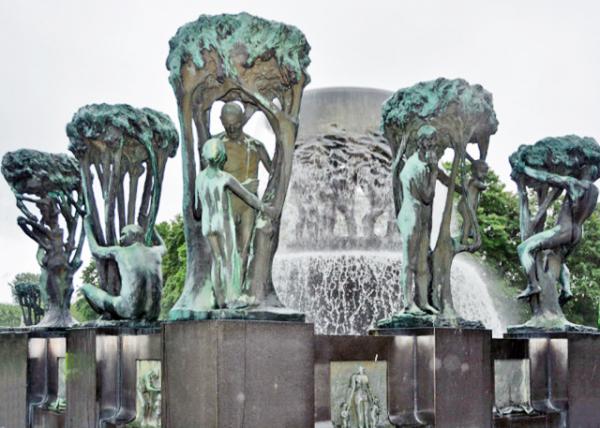 Fountain w/ Tree Group (喷泉与树丛) Fountain w/ Tree Group (喷泉与树丛)
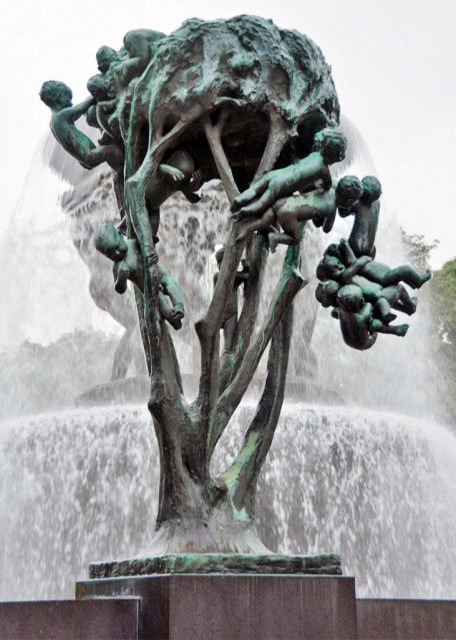
The Unfolding Life of Man (展示生命)
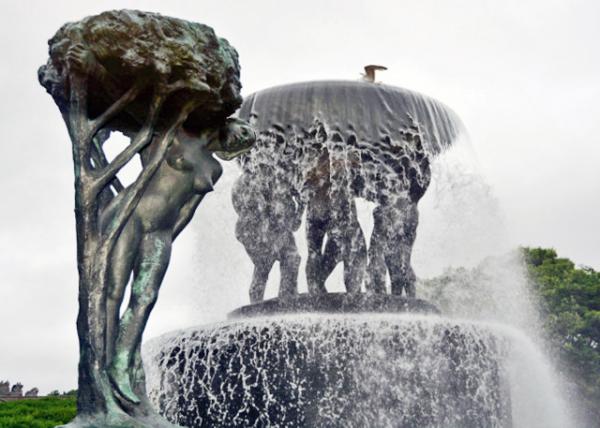 The Unfolding Life of Man (展示生命) The Unfolding Life of Man (展示生命)
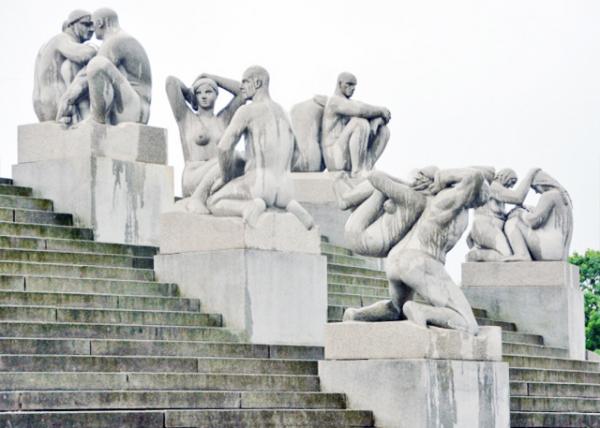 Embrace of Life (拥抱生活) Embrace of Life (拥抱生活)
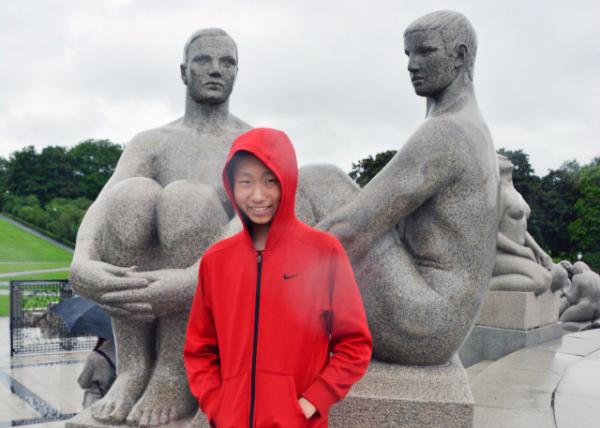 Embrace of Life (拥抱生活 06-26-2016) Embrace of Life (拥抱生活 06-26-2016)
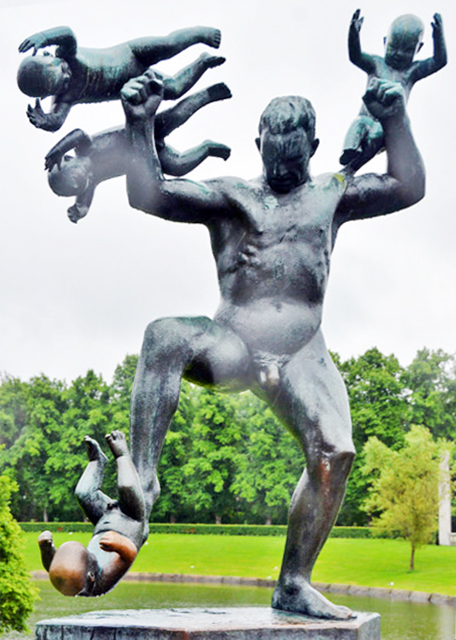
Man Chasing Four Geniuses (《追逐四位天才的男人》) 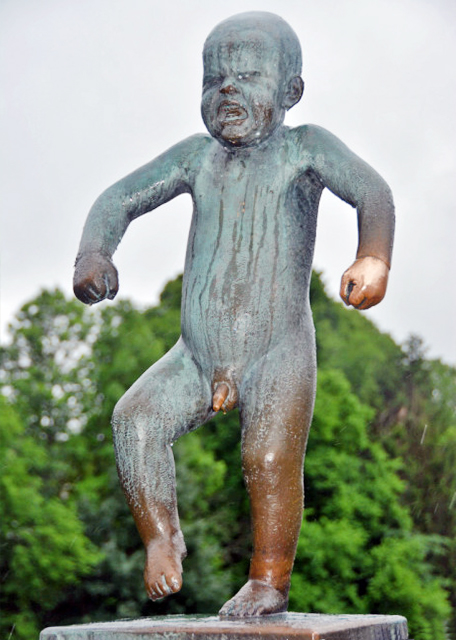
Angry Boy (雕塑《生气的男孩》)
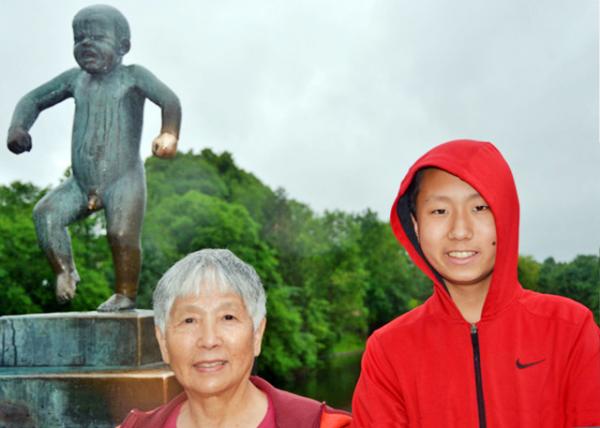 The Angry Boy's Golden Hand The Angry Boy's Golden Hand
(《生气的男孩》的金手 06-26-2016) 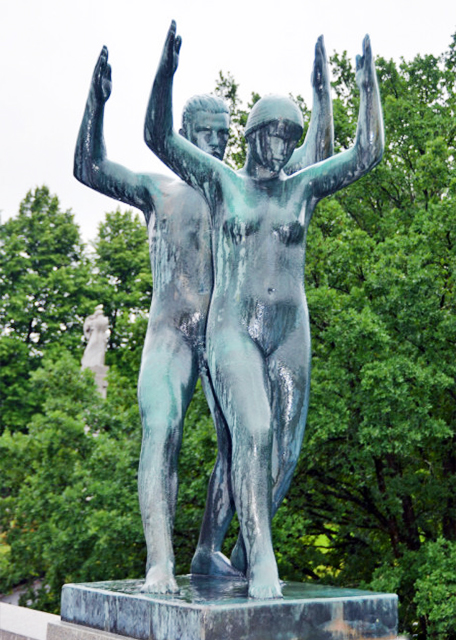
Man & Woman (雕塑《男人与女人》) 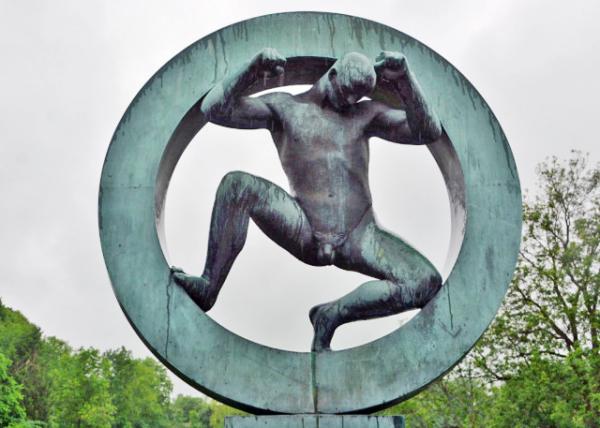 The Ring (雕塑《圆圈》) The Ring (雕塑《圆圈》)
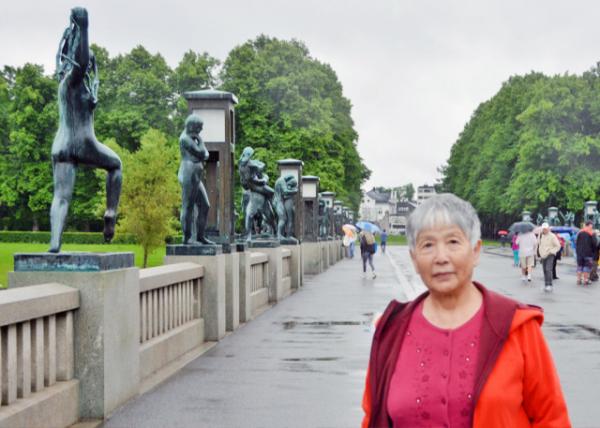 Humanity Sculptures on the Bridge (桥上人文雕塑 06-26-2016) Humanity Sculptures on the Bridge (桥上人文雕塑 06-26-2016)

Surrender (屈服) 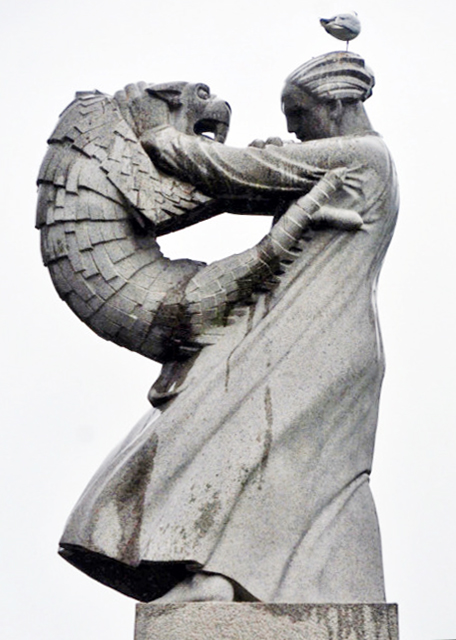
Fight (抗争)
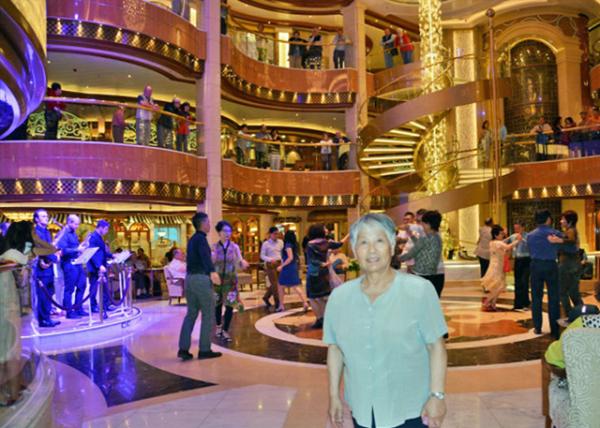 Big Band Ballroom w/ the Regal Princess Showband Big Band Ballroom w/ the Regal Princess Showband
(大乐池与“公主·帝王”号游轮乐队 06-26-2016)
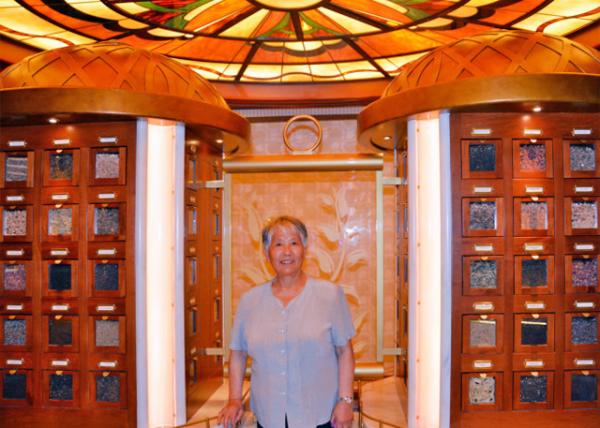 Tea Room (茶坊 06-26-2016) Tea Room (茶坊 06-26-2016)
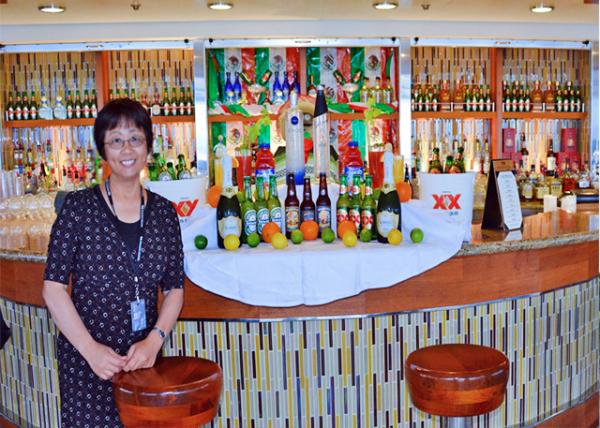 Outrigger Bar (观景酒吧 06-16-2016) Outrigger Bar (观景酒吧 06-16-2016)
 Halling Folk Dance (万圣节人民间舞蹈) Halling Folk Dance (万圣节人民间舞蹈)
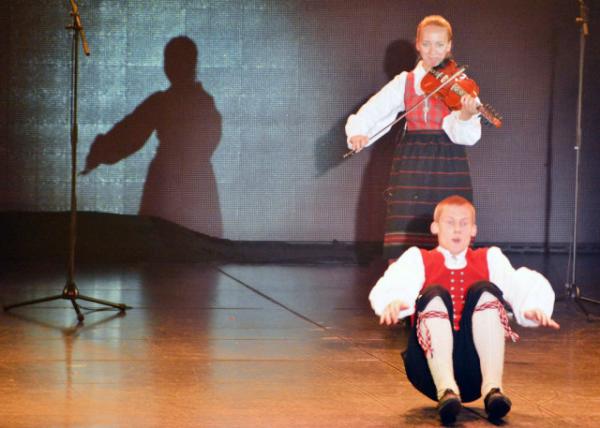 Halling Folk Dance (万圣节人民间舞蹈) Halling Folk Dance (万圣节人民间舞蹈)
 Norsk Teens (挪威高中生 06-26-2016) Norsk Teens (挪威高中生 06-26-2016)
Center Court @ Regal Princess 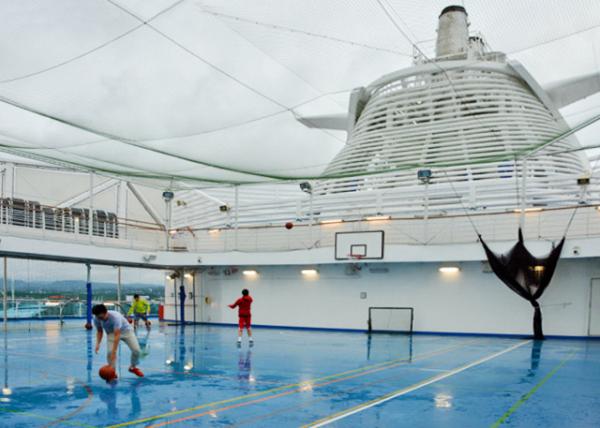 (“公主·帝王”号游轮中央球场 06-26-2016) (“公主·帝王”号游轮中央球场 06-26-2016)
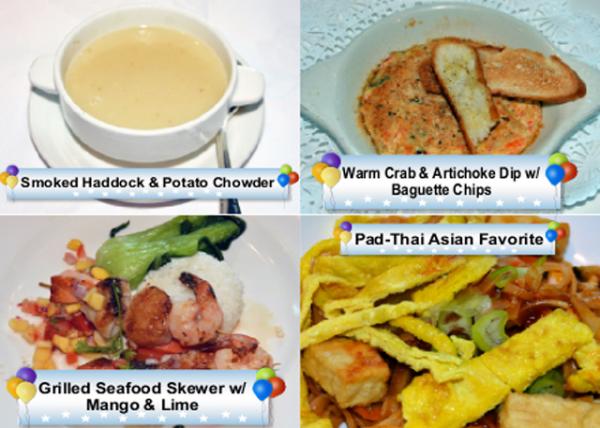 熏黑线鳕与土豆杂烩汤、热螃蟹和朝鲜蓟蘸酱与法式面包干、芒果酸橙海鲜串、泰式亚洲风味炒饭 熏黑线鳕与土豆杂烩汤、热螃蟹和朝鲜蓟蘸酱与法式面包干、芒果酸橙海鲜串、泰式亚洲风味炒饭
 烤大黄千层酥、三色冰激凌“草莓奶油太妃糖与冰糕” 烤大黄千层酥、三色冰激凌“草莓奶油太妃糖与冰糕”
Crosslinks(相关博文): Norway(出游挪威)
Europe(欧洲掠影) 7th Grade(初中二年级) |
